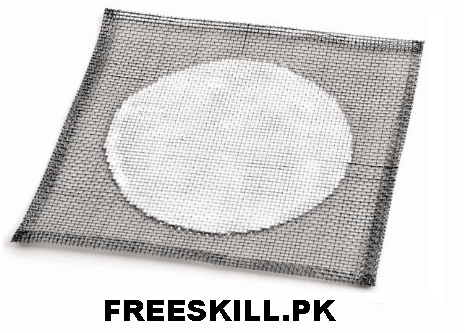Wire Gauze Function and Uses in laboratory is to be placed on a support ring and attached between the Bunsen burner, flasks and beakers to aid heat transfer. For general heating purposes in laboratories, high-quality wire gauze is made from stainless steel with ceramic centers. The Laboratory Apparatus known for its wire gauze. It is a thin sheet of metal with net-like or web-like patterns. This pattern also called metal mesh.

Wire Gauze Function and Uses
Wire gauze can be used for different ways. They are placed on a support ring over the Bunsen burner to distribute the heat from the burner flame. It can also support flasks or beakers. It spreads the flame evenly across the container when it is lit by a Bunsen burner using a tripod.
Working with gauze can be dangerous because it is a fire-based job. We need to exercise caution and follow the safety guidelines in the laboratory So that we don’t cause any harm or ill health. It is used in many industries, crafts and home improvements.
Wire Gauze Uses and Functions in Laboratory
Wire gauze can be used to support different containers. They are placed on a support ring over the bunsen burner to distribute the heat from the burner flame. It can also support flasks or beakers. It helps spread the flame evenly across the container if the bunsen burner flame lies beneath it using a tripod.
Working with gauze can be dangerous because it is a fire-based job. We need to exercise caution and follow the safety guidelines in the laboratory So we can avoid serious consequences and dangers for ourselves and others. It is used in many industries, crafts and home improvements.
Different Sizes, Varieties, and Types
It’s a net-like mesh made of wires that is interconnected. They are made with different wire gauges and have different spacing patterns. It can be made from different metals such as iron, steel, nichrome and copper. The following sizes of ceramic center wire gauze are often used in laboratories:
- 6 x 6 inches (15 x 15 cm) (150 mm)
- 5-inch (125 mm)
- 5 x 5 inches (13 x 13 cm) (125 mm) with ceramic center
- 4 x 4 inches (10 x 10 cm), (100 mm)
- 5 inches (130 mm)
Conclusion
The heat dissipated by using wire gauze is more even and efficient when the glassware is placed under a naked flame. This heat dissipation feature can be especially helpful when dealing with complex or delicate chemical reactions. In these cases, a precise heating system is crucial for the reaction to occur. Protecting glassware is also possible with wire mesh.
Bunsen Burner Parts and Functions, Diagram